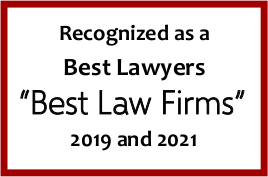Early case law describes property rights like a bundle of sticks. Each stick represents a different right that can include the right of ownership, of possession, of use, the right to collect rents, the right to income produced by the land, etc. Easements generally concern only one of those sticks – the right of use of property … someone else’s property for a limited purpose.
Today’s law recognizes numerous easements. They include very particular situations such as giving the federal government the right to regulate navigable waters, even when the regulation interferes with private water rights (navigation easement), allowing unimpeded aircraft flights over one’s land (avigational easement) and a prohibition against building structures on one’s property that would block light and/or air on a neighboring property (a negative easement called light and air easement). There’s even an easement that allows one property owner to flood another property owner’s land, for instance, to control the water level of a reservoir (flowage easement).
The “use” that is most commonly associated with easements is the right-of-way across someone else’s property. Easements, especially right-of-way easements, can be created under the law by open, continuous and adverse use (prescriptive easements) or by statute for utility companies to benefit the community (utility easements). However, most easements are “granted” from the land owner (grantor) to another (the grantee). The “servient estate” of an easement is the property owned by the owner/grantor that the easement burdens or runs on. The “dominant estate” is the property owned by the grantee benefitted by the easement.
When a right-of-way easement is indispensable to the reasonable use of the adjacent property, the law will create it by necessity. These are usually for property that is “landlocked” such that without the easement, there is no way to get to or from the property. Implied easements are also created by law when an owner of two pieces of land uses one to benefit the other such that, on sale of the benefitted parcel, the buyer could reasonably expect the use to be included in the sale.
Once created, most easements are “appurtenant” (meaning they benefit a dominant estate) and are “incident to ownership” of the dominant estate (meaning that without the ownership of the dominant estate, the easement loses its purpose). These easements are said to “run with the land.” There are, however, “easements in gross,” which benefit a particular person and not a piece of land. In fact, the benefitted person may not own any land close to the servient estate.
With the exception of utility easements, there is little direction from the law in Arizona on what needs to be in the description of an easement. In fact, Arizona law says that an easement is not void for lack of a sufficient description, so long as the servient estate is sufficiently described. So there is no requirement that a “legal description” based on a surveyor’s report be used. When the width, length, and location of the easement have been expressly set out in an easement grant, that description will be strictly read to control the scope of the easement, notwithstanding what the dominant estate actually needs. But where the terms of the easement haven’t been fixed by the grant, the dominant estate is usually entitled to an easement with such width, length, and location as is sufficient to afford necessary or reasonable ingress and egress.
Most litigation surrounding easements involves disputes as to location, scope, extent, or purpose of the easement. Generally, resolution of these disputes involves filing a declaratory judgment action asking a court to establish the rights of the parties. A declaratory judgment action does not provide for or order enforcement of rights, it merely tells the parties what rights they have. Before any property is bought or sold, it is a good idea to review carefully any deeded easements to make sure they grant what was intended. Litigation involving the scope or intent of an easement can be lengthy and expensive. It is always a better practice to define easements carefully so parties know what rights in the “bundle of sticks” they are giving and getting.


